- Home
- Richard Powers
The Overstory Page 2
The Overstory Read online
Page 2
TWELVE HUNDRED MILES EAST, in the city where John Hoel’s mother sewed dresses and his father built ships, disaster hits before anyone knows it. The killer slips into the country from Asia, in the wood of Chinese chestnuts destined for fancy gardens. A tree in the Bronx Zoological Park turns October colors in July. Leaves curl and scorch to the hue of cinnamon. Rings of orange spots spread across the swollen bark. At the slightest press, the wood caves in.
Within a year, orange spots fleck chestnuts throughout the Bronx—the fruiting bodies of a parasite that has already killed its host. Every infection releases a horde of spores on the rain and wind. City gardeners mobilize a counterattack. They lop off infected branches and burn them. They spray trees with a lime and copper sulfate from horse-drawn wagons. All they do is spread the spores on the axes they use to cut the victims down. A researcher at the New York Botanical Garden identifies the killer as a fungus new to man. He publishes the results and leaves town to beat the summer heat. When he returns a few weeks later, not a chestnut in the city is worth saving.
Death races across Connecticut and Massachusetts, jumping dozens of miles a year. Trees succumb by the hundreds of thousands. A country watches dumbstruck as New England’s priceless chestnuts melt away. The tree of the tanning industry, of railroad ties, train cars, telegraph poles, fuel, fences, houses, barns, fine desks, tables, pianos, crates, paper pulp, and endless free shade and food—the most harvested tree in the country—is vanishing.
Pennsylvania tries to cut a buffer hundreds of miles wide across the state. In Virginia, on the northern edge of the country’s richest chestnut forests, people call for a religious revival to purge the sin behind the plague. America’s perfect tree, backbone of entire rural economies, the limber, durable redwood of the East with three dozen industrial uses—every fourth tree of a forest stretching two hundred million acres from Maine down to the Gulf—is doomed.
NEWS OF THE BLIGHT doesn’t reach western Iowa. John Hoel returns to his rise on the twenty-first of each month, in all weather. The Hoel Chestnut keeps lifting the high-water mark of its leaves. It’s after something, the farmer thinks, his lone venture into philosophy. It has a plan.
On the night before his fifty-sixth birthday, John wakes up at two a.m. and feels around on the bed as if looking for something. His wife asks what’s wrong. Through clenched teeth he answers, “It’ll pass.” Eight minutes later, he’s dead.
The farm descends upon his first two sons. The elder, Carl, wants to write off the sunk costs of the photo ritual. Frank, the younger, needs to redeem his father’s decade of obscure research by carrying it forward as stubbornly as the tree spreads its crown. More than a hundred frames along, the oldest, shortest, slowest, most ambitious silent movie ever shot in Iowa begins to reveal the tree’s goal. A flip through the shots shows the subject stretching and patting about for something in the sky. A mate, perhaps. More light. Chestnut vindication.
When America at last joins the world conflagration, Frank Hoel is sent to France with the Second Cavalry Regiment. He makes his nine-year-old son Frank Jr. promise to keep taking pictures until his return. It’s a year for long promises. What the boy lacks in imagination he makes up for in obedience.
Pure, dumb fate leads Frank Sr. out of the cauldron of Saint-Mihiel only to liquefy him with a mortar shell in the Argonne, near Montfaucon. There isn’t enough left to put in a pine box and bury. The family makes a time capsule of his caps, pipes, and watches and sinks it in the family plot, under the tree that he photographed every month for a too-short while.
. . .
IF GOD HAD A BROWNIE, He might shoot another animated short subject: blight hovering a moment before plunging down the Appalachians into the heart of chestnut country. The chestnuts up North were majestic. But the southern trees are gods. They form near-pure stands for miles on end. In the Carolinas, boles older than America grow ten feet wide and a hundred and twenty feet tall. Whole forests of them flower in rolling clouds of white. Scores of mountain communities are built from the beautiful, straight-grained wood. A single tree might yield as many as fourteen thousand planks. The stocks of food that fall shin-deep feed entire counties, every year a mast year.
Now the gods are dying, all of them. The full force of human ingenuity can’t stop the disaster breaking over the continent. The blight runs along ridgelines, killing off peak after peak. A person perched on an overlook above the southern mountains can watch the trunks change to gray-white skeletons in a rippling wave. Loggers race through a dozen states to cut down whatever the fungus hasn’t reached. The nascent Forest Service encourages them. Use the wood, at least, before it’s ruined. And in that salvage mission, men kill any tree that might contain the secret of resistance.
A five-year-old in Tennessee who sees the first orange spots appear in her magic woods will have nothing left to show her own children except pictures. They’ll never see the ripe, full habit of the tree, never know the sight and sound and smell of their mother’s childhood. Millions of dead stumps sprout suckers that struggle on, year after year, before dying of an infection that, preserved in these stubborn shoots, will never disappear. By 1940, the fungus takes everything, all the way out to the farthest stands in southern Illinois. Four billion trees in the native range vanish into myth. Aside from a few secret pockets of resistance, the only chestnuts left are those that pioneers took far away, to states beyond the reach of the drifting spores.
FRANK HOEL JR. keeps his promise to his father, long after his father fades into blurry, black-and-white, overexposed memories. Each month the boy lays another photo in the balsam box. Soon he’s an adolescent. Then a young man. He goes through the motions the way the extended Hoel family keeps celebrating St. Olaf’s Day without remembering what it is.
Frank Jr. suffers nothing from imagination. He can’t even hear himself think: It’s very possible that I hate this tree. It’s very possible that I love it more than I loved my father. The thoughts can mean nothing to a man with no real independent desire, born under the thing he is chained to and fated to die under it, too. He thinks: This thing has no business here. It’s no good to anyone unless we chop it down. Then there are months when, through the viewfinder, the spreading crown seems to his surprised eye like the template for meaning itself.
In summer, water rises through the xylem and disperses out of the million tiny mouths on the undersides of leaves, a hundred gallons a day evaporating from the tree’s airy crown into the humid Iowa air. In fall, the yellowing leaves fill Frank Jr. with nostalgia. In winter, bare branches click and hum above the drifts, their blunt resting buds almost sinister with waiting. But for a moment each spring, the pale green catkins and cream-colored flowers put thoughts into Frank Jr.’s head, thoughts he doesn’t know how to have.
The third Hoel photographer keeps on taking pictures, just as he keeps going to church long after deciding that the entire faithful world has been duped by fairy tales. His pointless photographic ritual gives Frank Jr.’s life a blind purpose that even farming cannot give. It’s a monthly exercise in noticing a thing worth no notice at all, a creature as steadfast and reticent as life.
The stack of photos hits the five-hundred mark during World War II. Frank Jr. stops one afternoon to flip through the pictures. He himself feels like the same boy who made an ill-advised promise to his father at the age of nine. But the time-lapse tree has changed beyond all recognition.
When all the mature trees in the chestnut’s native range are gone, the Hoel tree becomes a curiosity. A dendrologist in Iowa City comes out to confirm the rumor: a chestnut that escaped the holocaust. A journalist from the Register does a feature on one of the last of America’s perfect trees. More than twelve hundred places east of the Mississippi have the word “Chestnut” in them. But you have to come to a rural county in western Iowa to lay eyes on one. Ordinary people, driving between New York and San Francisco on the new interstate that cuts a channel alongside the Hoel farm, see only a fountain of shade in the lone and level expan
ses of corn and soy.
In the bitter cold of February 1965, the No. 2 Brownie cracks. Frank Jr. replaces it with an Instamatic. The stack grows thicker than any book he has ever tried to read. But each photo in the sheaf shows only that lone tree, shrugging off the staggering emptiness that the man knows so well. The farm is to Frank Jr.’s back, each time he opens the lens. The photos hide everything: the twenties that do not roar for the Hoels. The Depression that costs them two hundred acres and sends half the family to Chicago. The radio shows that ruin two of Frank Jr.’s sons for farming. The Hoel death in the South Pacific and the two Hoel guilty survivals. The Deeres and Caterpillars parading through the tractor shed. The barn that burns to the ground one night to the screams of helpless animals. The dozens of joyous weddings, christenings, and graduations. The half dozen adulteries. The two divorces sad enough to silence songbirds. One son’s unsuccessful campaign for the state legislature. The lawsuit between cousins. The three surprise pregnancies. The protracted Hoel guerrilla war against the local pastor and half the Lutheran parish. The handiwork of heroin and Agent Orange that comes home with nephews from ’Nam. The hushed-up incest, the lingering alcoholism, a daughter’s elopement with the high school English teacher. The cancers (breast, colon, lung), the heart disease, the degloving of a worker’s fist in a grain auger, the car death of a cousin’s child on prom night. The countless tons of chemicals with names like Rage, Roundup, and Firestorm, the patented seeds engineered to produce sterile plants. The fiftieth wedding anniversary in Hawaii and its disastrous aftermath. The dispersal of retirees to Arizona and Texas. The generations of grudge, courage, forbearance, and surprise generosity: everything a human being might call the story happens outside his photos’ frame. Inside the frame, through hundreds of revolving seasons, there is only that solo tree, its fissured bark spiraling upward into early middle age, growing at the speed of wood.
Extinction sneaks up on the Hoel farm—on all the family farms in western Iowa. The tractors grow too monstrous, the railroad cars full of nitrogen fertilizer too expensive, the competition too large and efficient, the margins too marginal, and the soil too worn by repeated row-cropping to make a profit. Each year, another neighbor is swallowed up into the massive, managed, relentlessly productive monocrop factories. Like humans everywhere in the face of catastrophe, Frank Hoel Jr. goes blinking into his fate. He takes on debt. He sells off acreage and rights. He signs deals with the seed companies he shouldn’t. Next year, he’s sure—next year, something will come along and save them, as it always has.
All told, Frank Jr. adds seven hundred and fifty-five photos of the solitary giant to the hundred and sixty that his father and grandfather shot. On the twenty-first day of the last April of his life, with Frank Jr. confined to bed, his son Eric travels out to the farm from his home forty minutes away and sets up on the rise to snap yet one more black-and-white, now filled to the frame with exuberant branches. Eric shows the print to the old man. It’s easier than trying to tell his father he loves him.
Frank Jr. grimaces at a taste like bitter almonds. “Listen. I made a promise, and I kept it. You don’t owe nobody. Leave that damn thing be.”
He might as well command the giant chestnut itself to stop spreading.
THREE-QUARTERS OF A CENTURY dances by in a five-second flip. Nicholas Hoel thumbs through the stack of a thousand photos, watching for those decades’ secret meaning. At twenty-five, he’s back for a moment on the farm where he has spent every Christmas of his life. He’s lucky to be there, given the cancellations. Snowstorms sweep in from the west, grounding planes all over the country.
He and his folks have driven out to be with his grandmother. Tomorrow, more family will arrive from all over the state. With a flip through the photos, the farm memories come back to him: the holidays of his childhood, the entire clan gathering for turkey or carols, midsummer flags and fireworks. It’s all encoded somehow in that animated tree, the gatherings in each season, joining his cousins for days of exploration and corn-bound boredom. Flipping backward through the photos, Nicholas feels the years peel off like steamed wallpaper.
Always the animals. First the dogs—especially the three-legged one, half wild with affection every time Nick’s family pulled into the long gravel drive. Then the horses’ hot breath and the stiff shock of cows’ bristles. Snakes threading the harvested stalks. A stumbled-on rabbits’ nest down by the mailbox. One July, half-feral cats emerging from under the front porch, smelling of mystery and curdled milk. The small gifts of dead mice on the farm’s back doorstep.
The five-second film triggers primal scenes. Prowling the machine shed, with its engines and arcane tools. Sitting in the Hoel-crowded kitchen, breathing in the moldy, cracked linoleum while squirrels thumped in their hidden nests between the wall studs. Digging for hours with two younger cousins, their antique pear-handle shovels cutting a trench down into what Nick promised would soon be magma.
He sits upstairs at the rolltop desk in his dead grandfather’s study sampling a project that outlasted four generations of its makers. Of all the cargo packed into the Hoel farmhouse—the hundred cookie jars and glass snow globes, the attic box containing his father’s old report cards, the foot-pumped bellows organ rescued from the church where his great-grandfather was baptized, his father’s and uncles’ archaic toys, polished pine skittle bowling pins, and an incredible city run by magnets underneath the streets—this stack of photos has always been the one farm treasure he could never get enough of. Each picture on its own shows nothing but the tree he climbed so often he could do it blind. But flipped through, a Corinthian column of wood swells under his thumb, rousing itself and shaking free. Three-quarters of a century runs by in the time it takes to say grace. Once, as a nine-year-old, at the farm for Easter dinner, Nick riffled through the stack so many times that his grandfather cuffed him and hid the pictures away on the highest shelf of the mothballed closet. Nick was up on a chair and into the stack again as soon as the adults were safely downstairs.
It’s his birthright, the Hoel emblem. No other family in the county had a tree like the Hoel tree. And no other family in Iowa could match the multigeneration photo project for pure weirdness. And yet the adults seemed sworn never to say where the project was going. Neither his grandparents nor his father could explain to him the point of the thick flip-book. His grandfather said, “I promised my father and he promised his.” But another time, from the same man: “Makes you think different about things, don’t it?” It did.
The farm was where Nick first started sketching. The penciled dreams of boys—rockets, outlandish cars, massed armies, imaginary cities, more baroque with detail each year. Then wilder textures, directly observed—the forest of hairs on a caterpillar’s back and the stormy weather maps in the grain of floorboards. It was at the farm, drunk on the flip-book, that he first started to sketch branches. He lay on his back on the Fourth of July, looking up into the spreading tree while everyone else pitched horseshoes. There was a geometry to this constant splitting, a balance to the various thicknesses and lengths that lay beyond his powers as an artist to reveal. Sketching, he wondered what his brain would have to be like to distinguish each of the hundreds of lancet leaves on a given branch and recognize them as easily as he did the faces of his cousins.
One more flip through the magic movie, and faster than it takes for the black-and-white broccoli to turn again into a sky-probing giant, the nine-year-old cuffed by his grandfather turns into a teen, falls in love with God, prays to God nightly but rarely successfully to keep from masturbating to visions of Shelly Harper, grows away from God and toward the guitar, gets busted for half a joint of pot, is sentenced to six months in a juvie scared-straight facility near Cedar Rapids, and there—sketching for hours at a shot everything he can see through his steel-webbed dorm room windows—realizes that he needs to spend his life making strange things.
He was sure the idea would be a hard sell. Hoels were farmers, feed store owners, and farm equipment salesmen lik
e his father, violently practical people grounded in the logic of land and driven to work long, relentless days, year after year, without ever asking why. Nick prepared himself for a showdown, something out of the D. H. Lawrence novels that helped him survive high school. He practiced for weeks, choking on the absurdity of the request: Dad, I would very much like to plunge off the edge of commonsense existence, at your expense, and become certifiably unemployable.
He chose an early spring night. His father lay on a divan on the screened-in porch, as he did most nights, reading a biography of Douglas MacArthur. Nicholas sat in the recliner next to him. Sweet breezes blew in through the screen and uncombed his hair. “Dad? I need to go to art school.”
His father looked out over the top of his book, like he was gazing out on the ruins of his lineage. “I figured it would be something like that.” And Nick was gone, reeled out on a leash long enough to reach the Chicago Loop, with the freedom to test all the flaws inherent in his own desire.
At school in Chicago, he learned many things:
1. Human history was the story of increasingly disoriented hunger.
2. Art was nothing he thought it was.
3. People would make just about anything you can think to make. Intricate scrimshawed portraits on the tips of pencil leads. Polyurethane-coated dog shit. Earthworks that could pass for small nations.
4. Makes you think different about things, don’t it?
His cohort laughed at his little pencil sketches and hyperreal, trompe-l’oeil paintings. But he kept making them, season after season. And by his third year, he became notorious. Even cattily admired.
Winter night of senior year, in his rented broom closet in Rogers Park, he had a dream. A woman student he loved asked him, What is it that you really want to make? He bared his hands to the sky, shrugging. Tiny wells of blood pooled in the center of his palms. Up from those pools grew two branching spines. He thrashed in a panic, back up to consciousness. Half an hour passed before his heart slowed enough for him to realize where those spines came from: the time-lapse pictures of the chestnut his gypsy-Norwegian great-great-great-grandfather planted, one hundred and twenty years before, while self-enrolled in that correspondence school of primitive art, the plains of western Iowa.

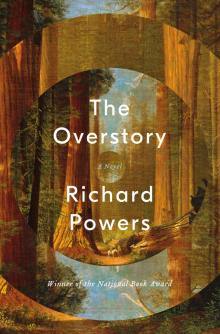 The Overstory
The Overstory Bewilderment
Bewilderment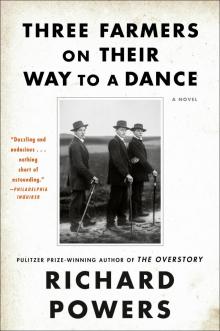 Three Farmers on Their Way to a Dance
Three Farmers on Their Way to a Dance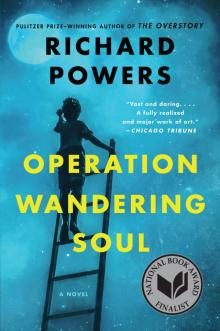 Operation Wandering Soul
Operation Wandering Soul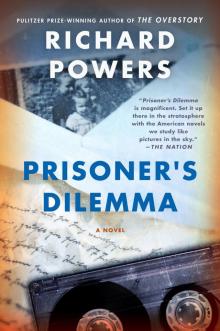 Prisoner's Dilemma
Prisoner's Dilemma The Gold Bug Variations
The Gold Bug Variations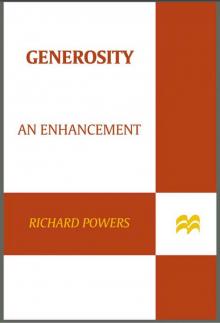 Generosity: An Enhancement
Generosity: An Enhancement The Echo Maker
The Echo Maker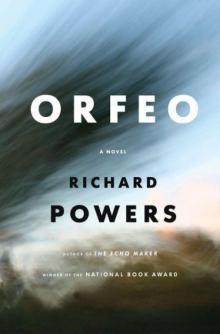 Orfeo
Orfeo The Time of Our Singing
The Time of Our Singing PLOWING THE DARK
PLOWING THE DARK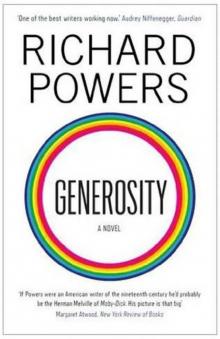 Generosity
Generosity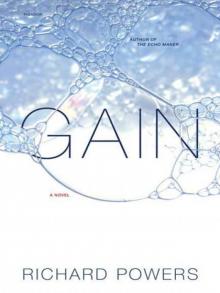 Gain
Gain